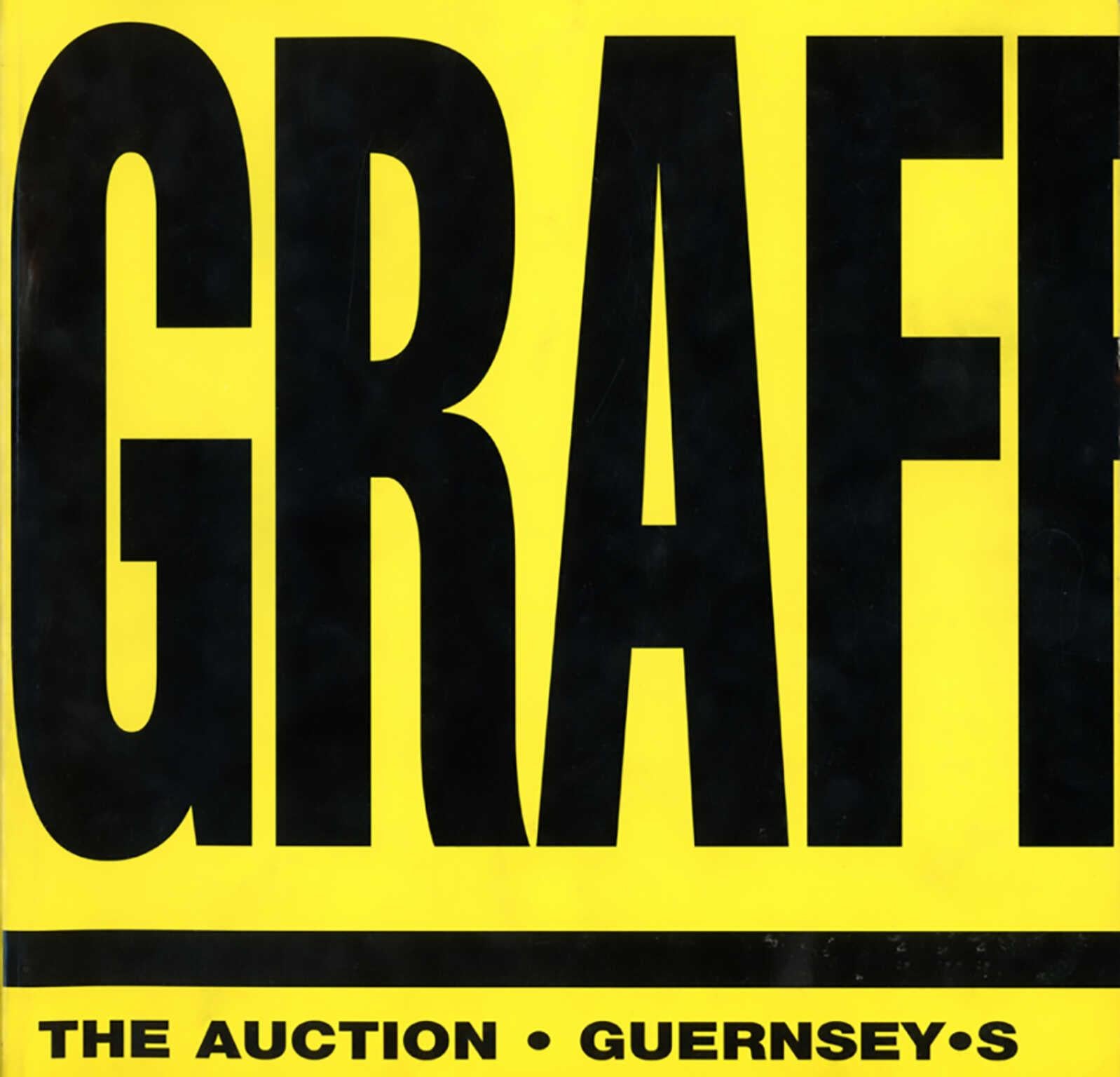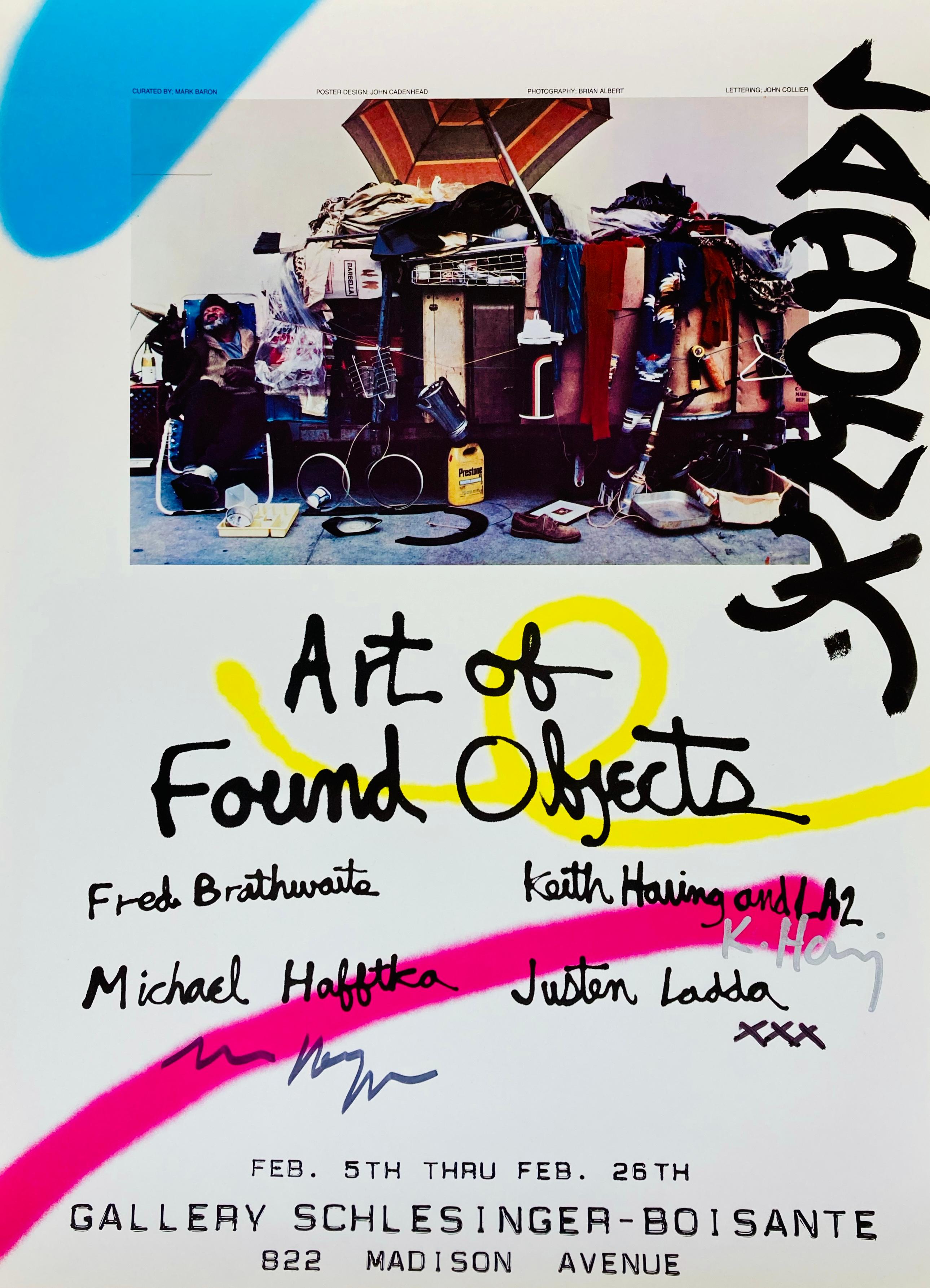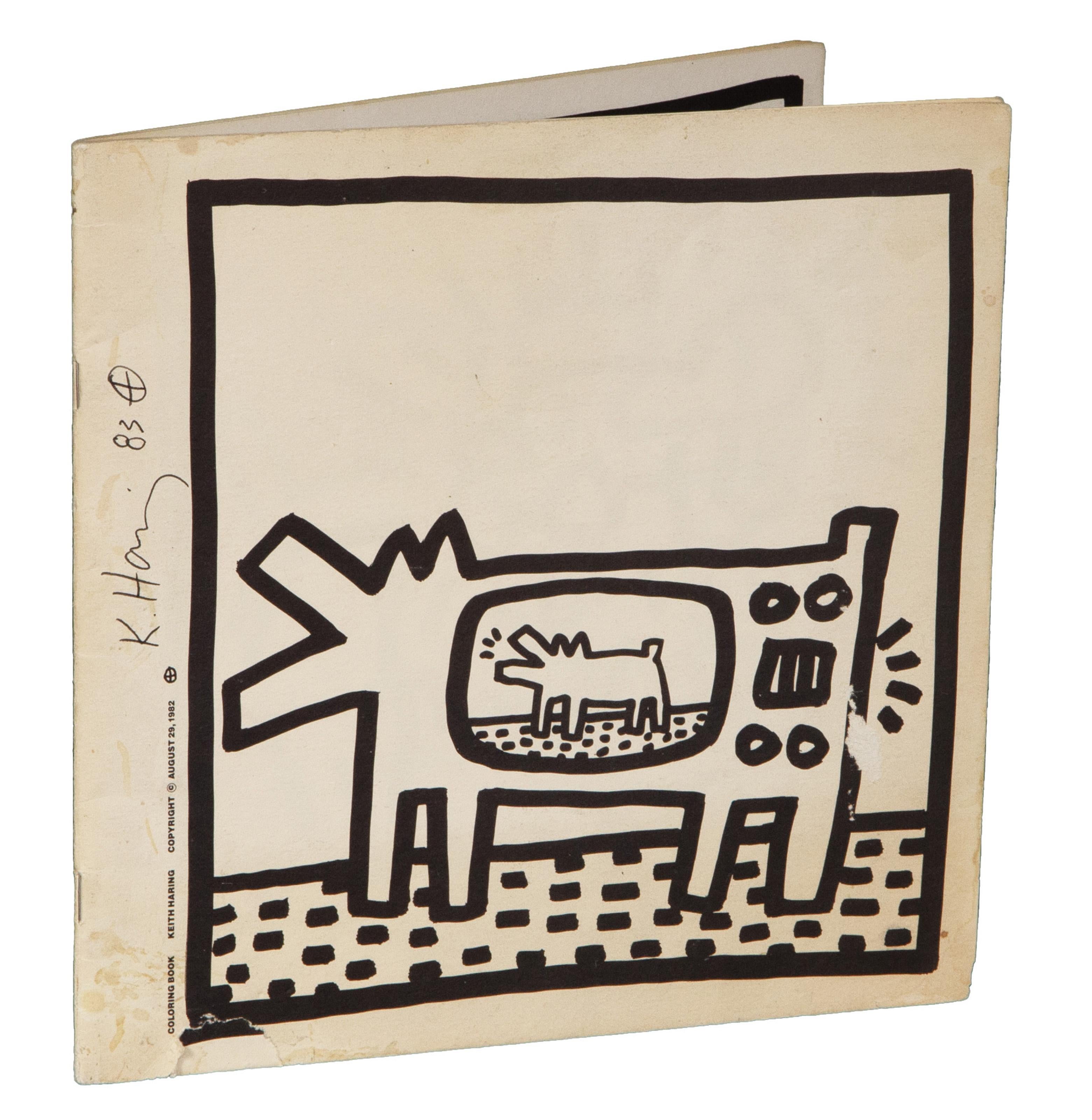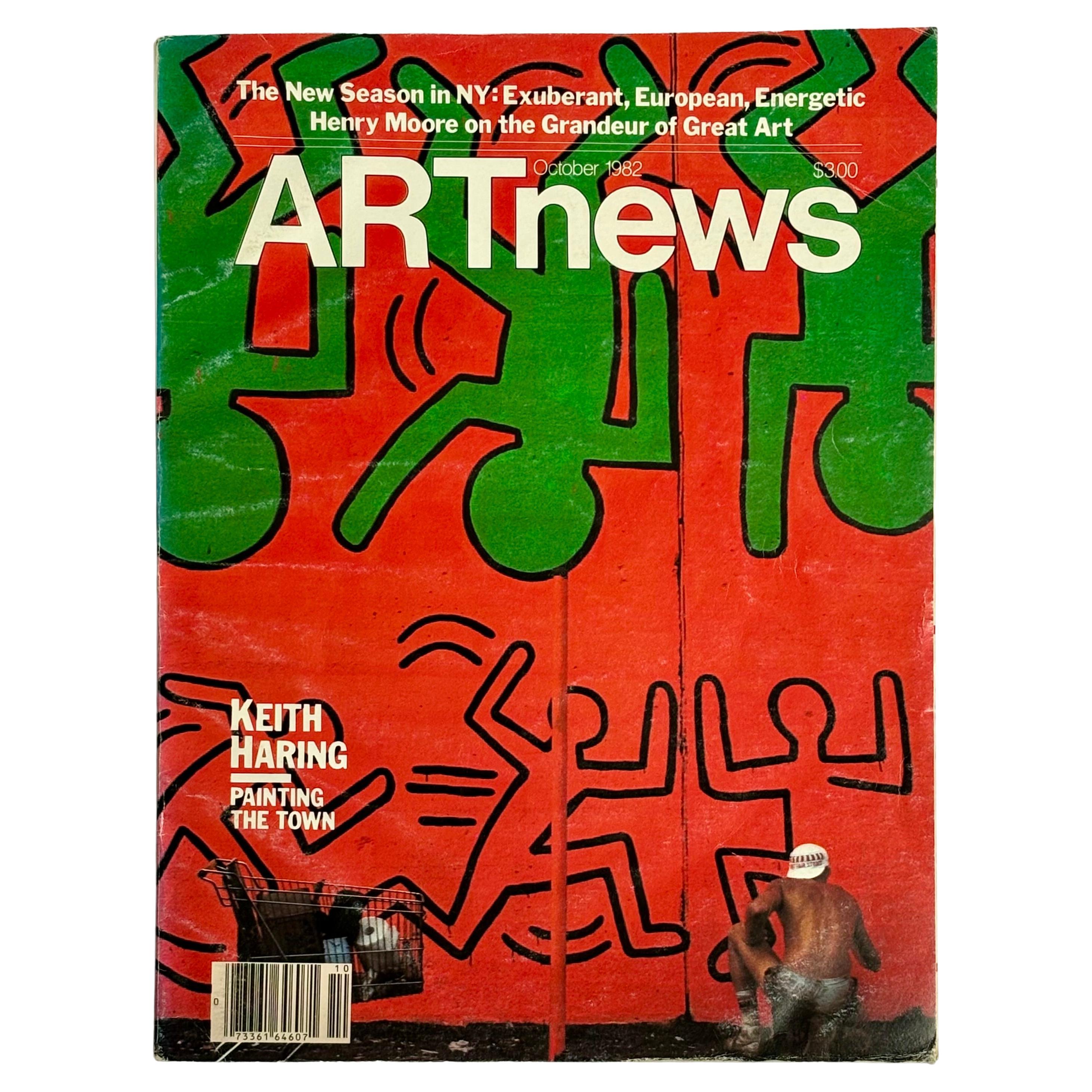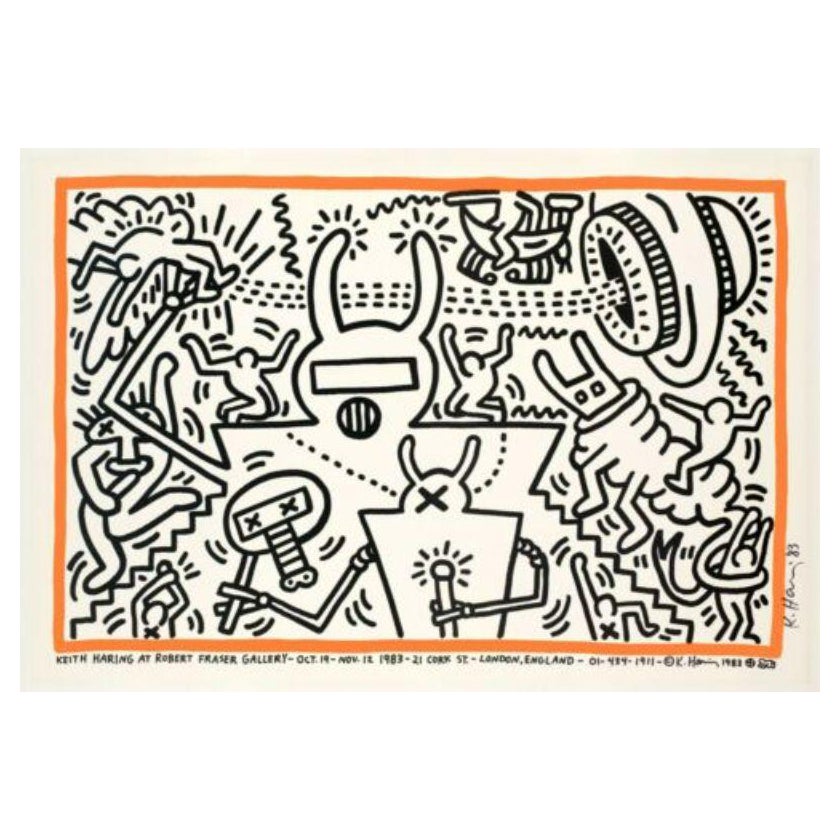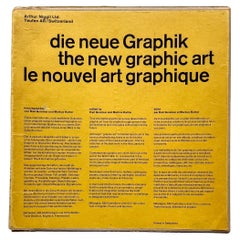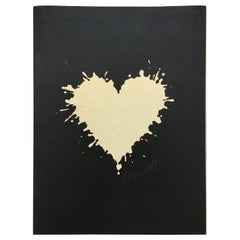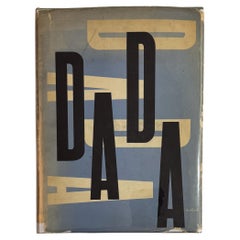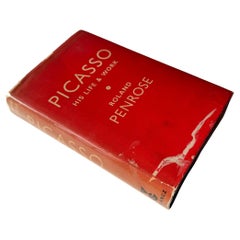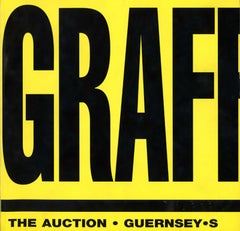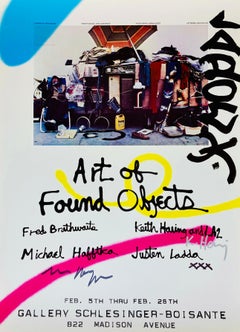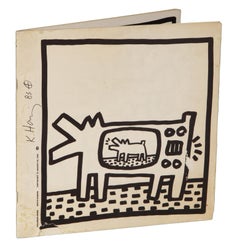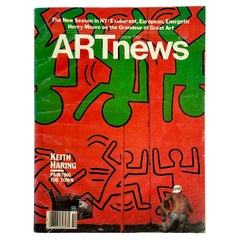Items Similar to Graffiti: The Auction
Want more images or videos?
Request additional images or videos from the seller
1 of 11
Graffiti: The Auction
$550
£408.12
€475.41
CA$765.60
A$852.57
CHF 443.72
MX$10,512.07
NOK 5,651.05
SEK 5,311.44
DKK 3,547.11
Shipping
Retrieving quote...The 1stDibs Promise:
Authenticity Guarantee,
Money-Back Guarantee,
24-Hour Cancellation
About the Item
Exhibition catalog for an auction of graffiti art held at Guernsey’s on June 14-15, 2000. Square 8vo (8.75” x 8.75”), printed wrappers, 144 pages, fully illustrated, primarily in color. While the cover title (Graffiti: The Auction) might in other circumstances be considered hyperbole, in this case it was merely descriptive, as this landmark auction was the first dedicated solely to graffiti. It featured work by Jean-Michel Basquiat, Keith Haring, KAWS, BLADE, Lady Pink, Martha Cooper, Henry Chalfant, Kenny Scharf, Phase 2, and a host of others. While the auction itself fell well short of financial expectations, the exhibition was deemed extraordinary (see the review by art historian Alan Moore, with the first line “It was a slaughter on Lafayette Street…”). Moore’s conclusion was prescient: “While adventurous patrons are now in short supply, graffiti’s time will come.” And the Guernsey’s catalog remains a touchstone.
- Dimensions:Height: 8.75 in (22.23 cm)Width: 8.75 in (22.23 cm)Depth: 0.75 in (1.91 cm)
- Style:Modern (Of the Period)
- Materials and Techniques:
- Place of Origin:
- Period:
- Date of Manufacture:2000
- Condition:Wear consistent with age and use. An exceptionally clean and bright copy, almost near fine.550.
- Seller Location:New York, NY
- Reference Number:1stDibs: LU828537406382
About the Seller
4.9
Recognized Seller
These prestigious sellers are industry leaders and represent the highest echelon for item quality and design.
Established in 1995
1stDibs seller since 2007
257 sales on 1stDibs
Typical response time: 1 hour
Associations
20th Century Specialists
- ShippingRetrieving quote...Shipping from: New York, NY
- Return Policy
Authenticity Guarantee
In the unlikely event there’s an issue with an item’s authenticity, contact us within 1 year for a full refund. DetailsMoney-Back Guarantee
If your item is not as described, is damaged in transit, or does not arrive, contact us within 7 days for a full refund. Details24-Hour Cancellation
You have a 24-hour grace period in which to reconsider your purchase, with no questions asked.Vetted Professional Sellers
Our world-class sellers must adhere to strict standards for service and quality, maintaining the integrity of our listings.Price-Match Guarantee
If you find that a seller listed the same item for a lower price elsewhere, we’ll match it.Trusted Global Delivery
Our best-in-class carrier network provides specialized shipping options worldwide, including custom delivery.More From This Seller
View AllDie Neue Graphik/The New Graphic Art/Le Nouvel Art Graphique (Association Copy)
By Karl Gerstner
Located in New York, NY
Foundational tome on modern graphic design, tracing the field from its origins in the 19th century through the late 1950’s. Published in 1959 by Arthur Niggli in Switzerland with tex...
Category
Vintage 1950s Swiss Minimalist Books
Materials
Paper
Pierre Mendell LTD ED Heart Portfolio Inscribed to Massimo Vignelli
By Massimo and Lella Vignelli
Located in New York, NY
A portfolio of 12 offset-printed heart designs by noted German graphic designer Pierre Mendell (1929-2008) assembled from his work at Mendell & Oberer -...
Category
1990s German Minimalist Books
Materials
Paper
The Dada Painters and Poets
By Robert Motherwell, Paul Rand
Located in New York, NY
First edition of The Documents of Modern Art, Vol. 8, edited and with an introduction by Robert Motherwell. Cover and typography by Paul Rand. Published in 1951 by Wittenborn, Schultz Inc. With texts by Richard Huelsenbeck, Hugo Ball, Kurt Schwitters, Jacques Vache, Tristan Tzara, Georges Ribemont-Dessaignes, George Hugnet, Andre Breton, Jean Arp, Paul Eluard, Louis Aragon, Gabrielle Buffet-Picabia, and Hans Richter. Illustrations by (or after) Jean Arp, Marcel Duchamp, Max Ernst, Raoul Hausmann, Paul Klee, Marcel Janco, Man Ray, Francis Picabia, Tristan Tzara, Kurt Schwitters, Kasimir Malevich, Pablo Picasso, Sophie Tauber...
Category
Vintage 1950s American Modern Books
Materials
Paper
Picasso: His Life and Work (with an Inscription and Drawing by Roland Penrose)
By Roland Penrose
Located in New York, NY
First edition of Roland Penrose’s monograph on his friend Pablo Picasso, published in 1958 by Victor Gollancz. With a full-page mixed media (crayon, pen-and-ink) rendering on the hal...
Category
Vintage 1950s British Modern Books
Materials
Paper
[1st ed] Teenage Lust (Signed)
By Larry Clark
Located in New York, NY
First edition of Larry Clark’s iconic second book of photographs (following 1971’s Tulsa) documenting and immortalizing a debauched adolescent subculture. Self-published in 1983. Con...
Category
Vintage 1980s American Modern Books
Materials
Paper
Andy Warhol Flowers (Leo Castelli Gallery Mailer, 1964)
By Andy Warhol
Located in New York, NY
Offset lithograph in colors on wove paper, published in conjunction with an exhibition—Warhol’s breakout “Flowers” show—held at New York's Leo Castelli Gallery from November 21-Decem...
Category
Vintage 1960s American Modern Posters
Materials
Paper
You May Also Like
Guernsey's Graffiti Auction Catalog 2000
By (after) Jean-Michel Basquiat
Located in NEW YORK, NY
Guernsey's Graffiti Auction Catalog 2000:
Original exhibition catalog to the seminal 2000 Guernsey’s graffiti art auction featuring works by Jean-Michel Basquiat, Keith Haring, KAWS, BLADE, Lady Pink, Martha Cooper, Henry Chalfant, Kenny Scharf, Phase 2 and more.
Medium: Soft bound art auction catalog; 144 pages.
Dimensions: 9 x 8.75 Inches
Very good overall vintage condition.
Unsigned from an edition of unknown. Scarce.
Features articles by Patti Astor, Phase 2, Steven Powers and more.
A much historic amalgamation of 1980's New York graffiti art...
Category
Early 2000s Street Art More Art
Materials
Paper
Signed Keith Haring exhibition poster 1983 (Keith Haring 1983)
By Keith Haring
Located in NEW YORK, NY
Keith Haring 1983:
A rare hand signed Keith Haring 1983 exhibition poster published on the occasion of: ‘Art of Found Objects’, Gallery Schlesinger-B...
Category
1980s Pop Art Prints and Multiples
Materials
Lithograph, Offset
Signed Lithograph Coloring Book by Keith Haring
By Keith Haring
Located in Long Island City, NY
A blank coloring book designed and printed by American Pop artist Keith Haring. This copy is signed and dated in pen by the artist and features several illustrations in the artist’s ...
Category
1980s More Prints
Materials
Lithograph
Keith Haring ArtNews 1982 (Keith Haring mural)
By Keith Haring
Located in Brooklyn, NY
Keith Haring New York 1982:
Rare vintage original 1982 issue of Art News featuring a timeless cover image by Martha Cooper of Keith Haring painting the historic Bowery and Houston St...
Category
Vintage 1980s Contemporary Art
Materials
Paper
Keith Haring, Original Art Galley Poster, Robert Frazer 1983, Handsigned, Warhol
By Keith Haring
Located in SAINT-OUEN-SUR-SEINE, FR
Original Keith Haring Poster-Robert Fraser Gallery-Warhol-Basquiat, 1983
Additional details:
Materials and Techniques: Lithograph and screenp...
Category
20th Century British Modern Posters
Materials
Paper
$17,813
Free Shipping
Post-Graffiti Catalog Sidney Janis Gallery NY 1983 (Basquiat Keith Haring 1983)
By Jean-Michel Basquiat
Located in NEW YORK, NY
Post-Graffiti Catalog, Sidney Janis Gallery, New York, Dec. 1 - 31, 1983:
Published on the occasion of "Post-Graffiti" at Sidney Janis Gallery, New York, Dec. 1 - 31, 1983, featuring works by Jean-Michel Basquiat, Daze, Keith Haring, Lady Pink, Angel Ortiz, Kenny Scharf, and other artists. A seminal early New York...
Category
1980s Street Art More Art
Materials
Lithograph, Offset, Paper
More Ways To Browse
Alan Streets
Rastad Relling Bambi
Rattan Flower Chair
Rattan Throne
Raymond Loewy For Rosenthal Germany
Rca Deco
Red Oak Chairs
Red Velvet Accent Chair
Reed And Barton Antique Sterling Patterns
Reed And Barton Antique Sterling Silver Patterns
Refectory Coffee Table
Refectory Table With Drawers
Regency Period Mahogany Canterbury
Regency Silver Teapot
Reupholstered Antique Chaise Lounge
Ribbed Leather Chairs
Riding Crop Silver
Risom Ottoman
